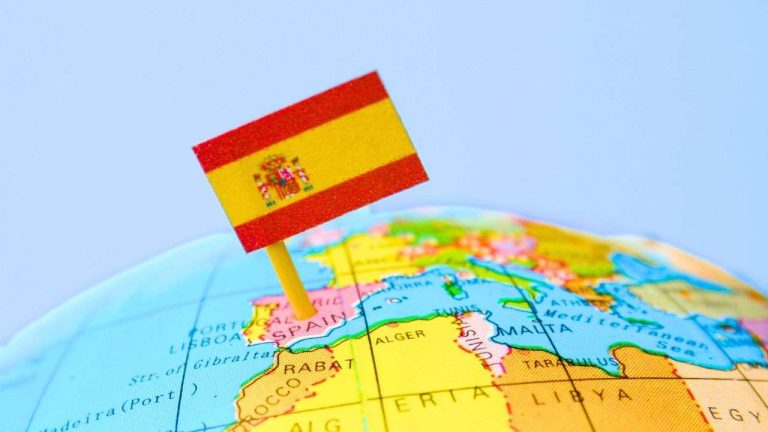Thinking of travelling to Spain from Australia? Prepare to immerse yourself in the thrilling flamenco rhythms, savour tantalising tapas, and explore the vibrant, historic streets of Spain.
This enticing destination promises a wealth of experiences for every Aussie traveller. In this comprehensive guide, we’ll cover the essentials – top destinations, visa requirements, savvy travel tips, and more.
So let’s get started on planning your unforgettable Spanish adventure!
Table of Contents
Top Destinations in Spain
Alright, let’s dive straight into the heart of Spain, its magical cities. These destinations aren’t just about stunning sights; they’re also a feast for the senses, filled with tantalising tastes, mesmerising music, and a pulsating passion for life.
Barcelona – Known for its art and architecture, this colourful city is a fusion of gothic and modernist design. The world-renowned La Sagrada Familia and Park Güell, both designed by Antoni Gaudí, should top your list. But let’s not forget the bustling Las Ramblas, a vibrant street teeming with life, day and night. For football fans, a visit to Camp Nou, the home of FC Barcelona, is a must.
Madrid – As Spain’s capital, Madrid is a potpourri of cultural experiences. From the historic Royal Palace to the world-class Prado Museum, there’s something for everyone. Take a leisurely stroll through Retiro Park, or enjoy authentic tapas in the bustling La Latina district. And don’t forget, Madrileños know how to party, so get ready to dance the night away! Check our Madrid Guide here.
Seville – Ah, Seville! Home to the world’s largest Gothic cathedral and the stunning Alcázar castle, this city is the beating heart of Andalusia. The charm of the old quarter, Barrio Santa Cruz, will captivate you with its narrow streets and hidden plazas. Seville is also the birthplace of flamenco, so catching a live performance is an absolute must-do.
Granada – Nestled at the foot of the Sierra Nevada mountains, Granada is a history lover’s paradise. The crowning jewel of this city is the Alhambra, an impressive Moorish palace with breathtaking views of the city. Don’t forget to explore the Albayzín district with its winding streets and stunning vistas.
Valencia – Valencia has a unique blend of the old and the new. From the awe-inspiring City of Arts and Sciences to the bustling Central Market and the historical Torres de Serranos, there’s plenty to explore. And when in Valencia, you simply must try the traditional dish, paella.
Each of these cities, with their distinct flavours and attractions, promises a memorable experience. Whether it’s the lure of architecture, food, culture, or history, travelling to Spain from Australia has it all! So pack your bags, mi amigo, and get ready to fall in love with Spain.
If you’re interested in delving deeper into these and other top Spanish destinations, consider exploring our comprehensive guides: Best Places To Visit In Spain, Top Things to do in Madrid.
Do Australians Need a Visa for Spain?
Now, let’s talk about visas. You might be wondering, “Do we Aussies need a visa for Spain?” The answer is, it depends on how long you’re planning to stay.
If you’re going on holiday or for a short visit (up to 90 days within a 180-day period), you’re in luck. Australia is a part of the Schengen visa-exempt countries, meaning a Spanish visa for Australians is not needed for short stays. So, for most of you dreaming about a Spanish getaway, the process is pretty straightforward.
But, if you’re planning to stay longer, perhaps to work or study, you will need a long-term national visa. There are different types of these visas, like the student visa, work visa, and non-lucrative visa (if you can prove you have sufficient means to support yourself without working).
Applying for these long-term Spanish visas for Australians involves a more extensive process. You’ll need to fill out an application form, provide supporting documents (like proof of funds, health insurance, accommodation, and more), and pay a fee. Plus, you’ll need to make an appointment and apply in person at the Spanish Consulate.
From mid-2025, there’s a new travel requirement on the horizon for Aussies heading to Spain – the ETIAS (European Travel Information and Authorisation System). This system is set to bolster security and enhance border control surveillance in Europe.
So, what does this mean for you, our adventurous Australian planning to travel to Spain from 2025 onwards? You’ll need to secure an ETIAS approval before your departure. This holds true not just for Spain, but for all EU member countries in the Schengen area. So, keep this on your radar when planning your Spanish holiday!
Remember, regulations can change, so it’s always a good idea to check the latest visa information from official resources, such as the Spanish Consulate in Sydney or the Spanish Consulate in Melbourne, before your departure.
As an experienced traveller myself, I can’t stress this enough: always keep your documents in order, and keep abreast of the latest updates. After all, you want your travel memories to be about the stunning Spanish architecture and tantalising tapas, not visa hassles!
Spain Entry Requirements from Australia
So, you’ve got your heart set on Spain, and you’re ready to jet off. But hold on, there are a few requirements for entering Spain from Australia.
First things first, your passport. For us Aussies travelling to Spain, our passport should be valid for at least three months beyond the period of stay. And remember, this applies to everyone: adults, teens, kids, and even the little bub!
Now, about visas. As I mentioned earlier, if you’re planning a short visit (less than 90 days), you generally won’t need a visa. But, for longer stays or specific purposes like work or study, you’ll need to apply for the appropriate long-term visa.
At the time of writing, there are currently no COVID-19 health controls required upon arrival in Spain. This is fantastic news for us Aussies keen on savouring Spanish culture with minimal hassle. However, as we all know, travel guidelines, especially health-related ones, can change quickly in response to global situations.
To ensure you’re up-to-date and prepared for your journey, I strongly recommend checking the latest information from official sources before your departure. Websites of the Spanish Ministry of Health and the Australian Department of Foreign Affairs and Trade are excellent places to start. You can also check Smartraveller, the Aussie government’s travel advice site.
Remember, being well-informed is an integral part of travel planning. So, take a moment to do your homework and stay updated for a smooth journey when entering Spain from Australia. Before you know it, you’ll be sipping sangria or eating paella under the glorious Spanish sun, and immersing yourself in the vibrant local culture. So, buckle up for your exciting journey! Safe travels, my fellow explorers!
Travelling from Australia to Spain

Now we come to the exciting part – flying to Spain from Australia! As someone who has travelled this route a few times, I can assure you it’s an adventure in itself.
There are no direct flights from Australia to Spain, so you’ll have a layover or two. But don’t worry, layovers can be fun too! Flying to Spain from Australia It’s a chance to stretch your legs, explore a new airport, maybe even a new city if you have enough time.
Major airlines operating on this route include Emirates, Qatar Airways, Cathay and Singapore Airlines. You can choose to have your stopover in cities like Dubai, Doha, Hong Kong or Singapore, depending on the airline. I’ve always loved my layover in Dubai – it’s like a mini-holiday within a holiday!
Seasonal variations and special offers do pop up, especially around the European summer. So, keep an eye on airline websites and sign up for their newsletters to get the best deals.
When it comes to booking flights, my advice is to plan ahead and be flexible. Sometimes, changing your departure date by a few days can save you quite a bit. And don’t forget to compare prices on different websites before booking.
For a comfortable journey, consider your seat selection. An aisle seat gives you more room to stretch, while a window seat offers great views. And remember to pack a travel pillow, an eye mask, and earplugs for a more comfortable sleep onboard.
Another pro tip: stay hydrated and move around during the flight to avoid jet lag. And of course, pack your favourite book, download your favourite shows, or bring along that crossword puzzle you’ve been meaning to finish.
Finally, remember to check the baggage allowance and restrictions of your airline. Nothing dampens the travel spirit like having to pay for excess luggage at the airport.
Before you know it, you’ll be descending into a Spanish city, ready to start your adventure. Happy flying to Spain from Australia, amigos!
Spain Travel Advice for Australians
You’re almost ready to pack your bags, but before you do, let’s cover some essential travel advice for your Spanish adventure.
Safety first, amigos. Spain is generally a safe country, but like anywhere else, you should take precautions. Keep an eye on your belongings, especially in crowded tourist spots and public transport. It’s always a good idea to keep your passport and valuable items in a hotel safe or similar secure place.
Spain has a rich cultural tapestry, with customs and norms that might be different from ours. For instance, the Spanish usually eat dinner late, often not before 9 pm. And don’t be surprised if you see locals enjoying a siesta, a short nap, in the afternoon – it’s a time-honoured tradition! Respecting these customs will enrich your experience and help you connect with the local people.
Regarding health, make sure you’re up-to-date with your routine vaccinations before travelling to Spain. It’s always a good idea to pack a basic first aid kit too, just in case. If you’re on prescription medication, carry enough for your entire trip and bring a copy of your prescription.
Travel insurance is another crucial aspect to consider. A good travel insurance policy should cover medical expenses, theft, loss of belongings, and trip cancellation or interruption. And remember to carry your insurance card and emergency contact numbers with you at all times.
The Australian Government provides updated travel advisories for Spain through the Smartraveller website. Check this regularly before and during your trip for any important updates or alerts.
As for emergency contact numbers in Spain, dial 112 for any emergency services (this is similar to our ‘000’), including police, ambulance, and fire brigade. For consular assistance, you can contact the Australian Embassy in Madrid.
Enjoy your journey, be respectful, and immerse yourself in the vibrant Spanish culture. And remember, whether you’re gazing at Gaudí’s architectural wonders in Barcelona or getting lost in the narrow lanes of Seville, always travel with an open mind and heart. Safe travels!
Wrapping up
Well, there you have it – a comprehensive guide on travelling to Spain from Australia. From the top destinations to visa requirements, entry protocols, and handy travel tips, we’ve covered all the basics to get you ready for your Spanish escapade.
But the journey doesn’t end here. Spain is an intricate tapestry of experiences, waiting to be unravelled. To delve deeper and uncover the country’s hidden gems, don’t forget to check out our detailed guide on the best places to visit in Spain. Trust me, you’ll discover experiences and destinations that will make your heart sing!
So, gear up, embrace the spirit of adventure, and get ready to fall in love with Spain. As the Spanish say, “¡Buen viaje!” – have a good trip!
FAQ
Is it better to use cash or card in Spain?
Both cash and card are widely accepted in Spain. You can also pay with your phone virtually everywhere now, however, smaller businesses, especially in rural areas, may prefer cash. But for most tourists, using a credit or debit card for purchases and ATM withdrawals is a convenient option. Remember to notify your bank of your travel plans to avoid any potential blocks on your card.
Should I exchange money before I travel to Spain?
It’s not essential to exchange money before travelling to Spain, as you can easily withdraw euros from ATMs upon arrival. However, carrying a small amount of local currency for initial expenses like a taxi fare is a good idea.
How much cash should I take to Spain for a week?
This greatly depends on your personal spending habits and itinerary. On average, around 70 to 100 euros per day should cover meals, transportation, and sightseeing expenses. So, for a week, around 500 to 700 euros could be a good ballpark. Always have access to more funds just in case.
What is the cheapest way to get euros in Spain?
The cheapest way to get euros is usually to withdraw from an ATM in Spain using a card that doesn’t charge international withdrawal fees. I recently used Wise and had a good experience. This will generally give you a better exchange rate than currency exchange offices.
What is the best card to use in Spain?
The best card to use in Spain is a credit or debit card that doesn’t charge foreign transaction fees. Visa and MasterCard are widely accepted. If you plan to use a credit card, consider one that offers travel rewards or benefits. Always have a backup card, just in case.




